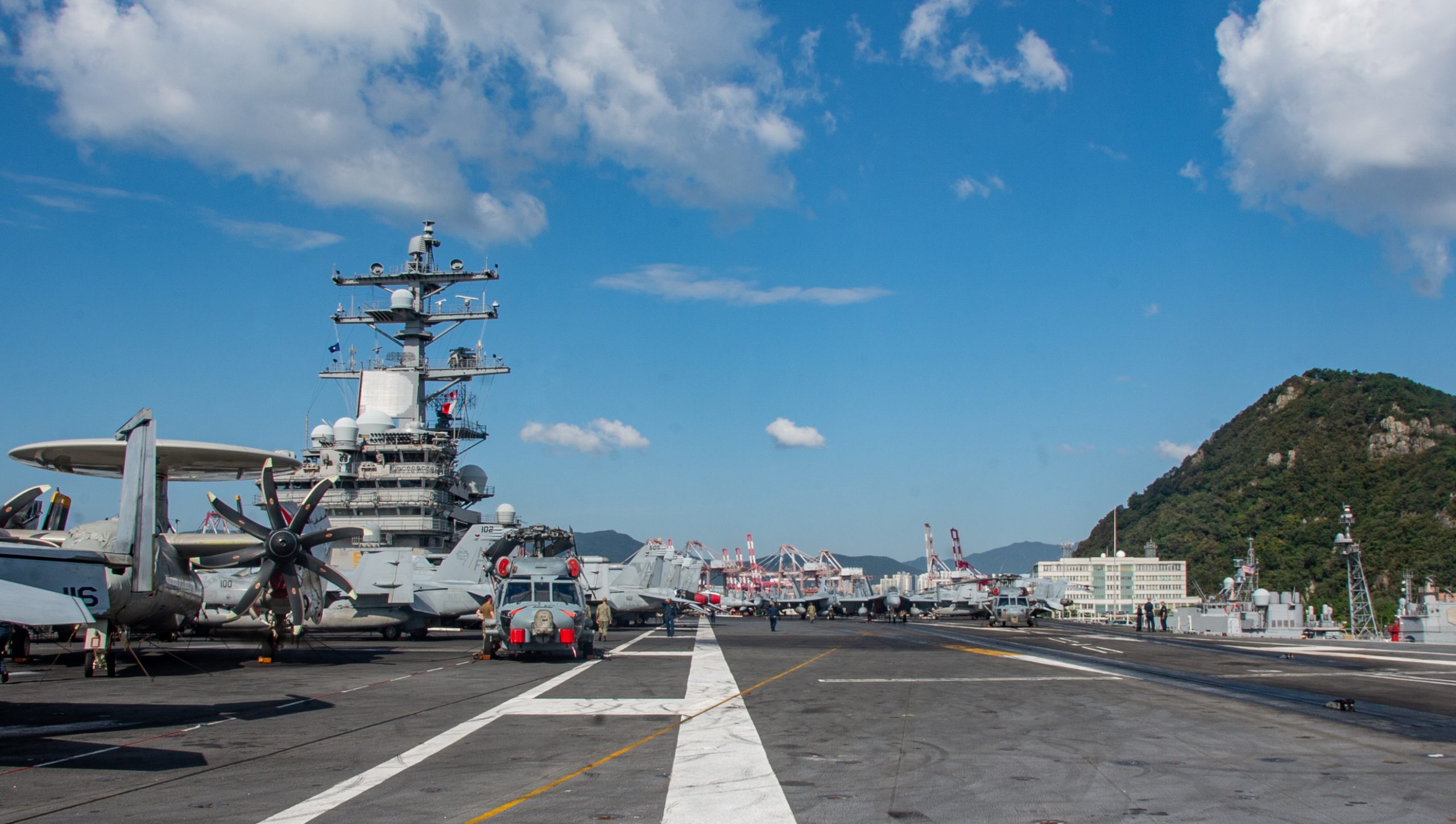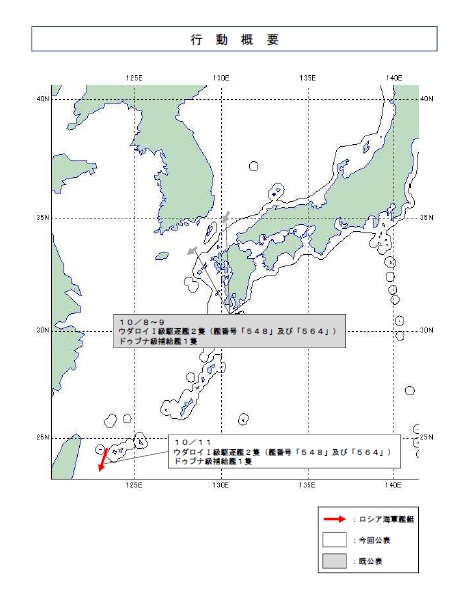
The Ronald Reagan Carrier Strike Group arrived in South Korea on Thursday for a port visit after wrapping up drills with the Republic of Korea Navy ROKN and the Japan Maritime Self-Defense Force earlier this week. Meanwhile, a P-8A Poseidon flew through the Taiwan Strait on Thursday, with China issuing a protest on the flight.
Carrier USS Ronald Reagan (CVN-76) led CSG 5 to the ROK on Thursday for a port visit and docked in Busan with cruisers USS Antietam (CG-54) and USS Robert Smalls (CG-62), according to a Navy news release. Destroyer USS Shoup (DDG-86) pulled in to Chinhae.
“The U.S. Navy and our carrier strike groups have a long and productive history with our Korean allies, and our port visit here is the latest opportunity to strengthen the relationships between our people and navies,” Rear Adm. Pat Hannifin, the commander of CSG 5, saidthe release. “Since the establishment of our Mutual Defense Treaty in October of 1953, the alliance between the U.S. and Republic of Korea has become the linchpin of peace and security in the region.”
Reagan’s visit marked the second time this year that a carrier has visited Korea, with USS Nimitz (CVN-68) visiting in March. Reagan previously visited Korea last September. North Korea launched ballistic missiles in response to both carriers conducting drills with the ROK military. So far, North Korea has not carried out any missile launches in response to Regan‘s latest visit.
A P-8A Poseidon flew through the Taiwan Strait on Thursday and China’s Ministry of National Defense issued a statement in response. Spokesperson for the People’s Liberation Army (PLA) Eastern Theater Command, Snr. Col. Shi Yi stated, “The Eastern Theater Command of the Chinese People’s Liberation Army organized fighter planes to monitor the passage of U.S. aircraft, and dealt with them in accordance with laws and regulations.”
The Navy also issued a brief statement on the flight. “By operating within the Taiwan Strait in accordance with international law, the United States upholds the navigational rights and freedoms of all nations. The aircraft’s transit of the Taiwan Strait demonstrates the United States’ commitment to a free and open Indo-Pacific.” Thursday’s flight is the fourth U.S. flight made over the Taiwan Strait by a P-8A this year, with previous flights on Feb. 27, Apr. 28 and July 13.
Meanwhile, Japan Defense Minister Minoru Kihara stated in a press conference on Tuesday that the U.S. Air Force 319th Expeditionary Reconnaissance Squadron and its eight MQ-9 Reaper drones from JMSDF Kanoya Air Base, Kyushu, to Kadena Air Base, Okinawa, would redeploy to expand surveillance of the sea and airspace around Japan’s southwest region.
The initial agreement between the U.S. and Japan was for the MQ-9s to operate for a one-year deployment at JMSDF Kanoya, with that period set to expire soon. Kihara said that given the heightened need for intelligence, surveillance and reconnaissance around Japan’s southwest region due to the activities of bordering countries, the U.S. and Japan agreed that the deployment should be relocated and continued without a set end date. Kihara did not name the countries of concern, but was clearly referencing China and North Korea.
The security and defense of its southwest region has been a concern to Japan for a number of reasons, which include China’s claims on the Senkaku Islands. North Korea’s ballistic-missile launches are another threat to the region, with Japan concerned that a missile launched would hit Japanese territory. Japan’s southwest islands also border Taiwan, and the People’s Liberation Army Navy (PLAN) has been intensifying its operations and exercises, potentially in preparation for a future blockade. The PLAN’s Liaoning and Shandong carrier strike groups have also been conducting deployments near the southwest region.

In addition, China and Russia have both been conducting joint sails and bomber flights in the area, which also serves as a transit route for PLAN and Russian Navy ships leaving or entering the East China Sea. Japan issues regular reports on both navies’ movements, with the latest being a Wednesday report updating the movements of a Russian Navy Surface Action Group (SAG) comprising of destroyers RFS Admiral Panteleyev (548) and RFS Admiral Tributs (564) and a Dubna-class fleet oiler. The SAG had earlier been sighted transiting the Tsushima Strait from Sunday to Monday
The Joint Staff Office (JSO) of the Ministry of Defense issued a release on Wednesday stating that the three Russian ships had been sighted that day at 1 p.m. sailing westward in an area 87 miles west of Iriomote Island. The ships then sailed between Iriomote Island and Yonaguni Island to enter the Philippine Sea. A JMSDF P-3C Orion shadowed the Russian ships. The Russian Ministry of Defense has announced that the ships, which are from the Russian Navy Pacific Fleet, are on a deployment to conduct engagement activities in the Asia Pacific region.





